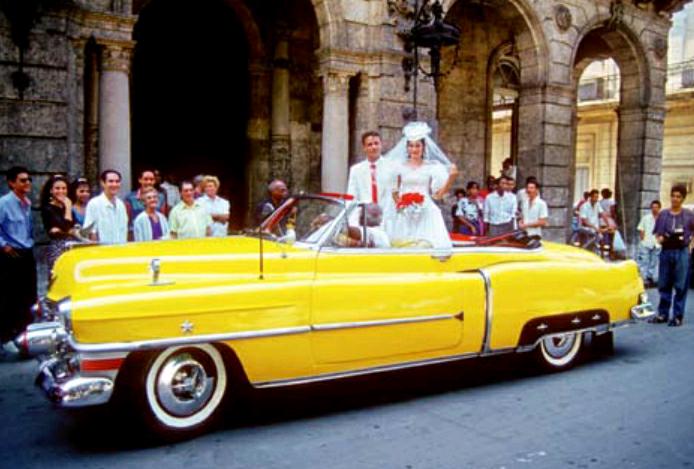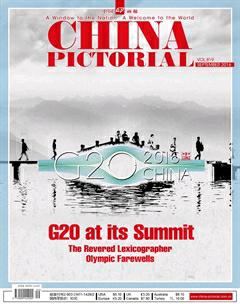Life on Wheels
by+Yi+Mei
The United States is considered “a nation on wheels” by many, and American lifestyles were completely transformed by automobiles nearly a century ago. Today, the ancient country of China is home to the auto market with the greatest potential in the world.
Recently, the Beijing Auto Museum presented Life on Wheels – Photography Exhibition of Chinese and American Automobile Culture, featuring the development and accompanying culture of automobiles in both nations, creating a narrative involving cars, life, culture and art.
“This year marks the 130th anniversary of the invention of automobile,” declares Yang Rui, curator of the Beijing Auto Museum.“As one of the defining inventions of the 20th Century, the automobile not only shortened the distance between people and countries, but also became a new language for international cross-cultural communication.“
Auto Art
The exhibit presents the opportunity to trace the history of American automobile culture, looking back how the unique new culture spread across every aspect of public life, peaked, endured the economic and oil crisis and emerged from downturns via more innovation. One highlight of the exhibition was a photography series of“16 Cars” shot by Michael Furman, which included world-famous vintage cars and important landmarks of automobile development history since 1903. The first photograph the 62-year-old artist ever took was that of a 1963 Chevrolet Corvette, which forged his deep connection with the car as well as with the medium of photography.
The first “horseless carriage,” or “car”for short, was modeled after wagon boxes of the 19th Century. In the 1920s, the U.S. saw its first auto boom, and by 1927, more than 70 percent of American families owned a car. The shape of vehicles evolved from being heavy and rigid to being elegant as owners tastes became more refined. During World War II, shortages of materials and money inspired small, energy-saving cars in Europe while Americans continued preferring large, magnificent vehicles. Up until the 1960s, Americans had considered the automobile a standard household necessity.
In the eyes of the photographer Harrod Blank, the machine itself is a work of art. His work focuses on personalized“art cars,” including a “lost and found car”decorated with the found items, a “button car” covered with 600,000 buttons, and a“graffiti car” covered with chalk drawings. One of his photos depicts a 1971 Volkswagen Beetle covered in trash collected from southern Florida including cigarette butts, soda cans, and plastic bags, making it hearken even more to the cars insect namesake. The designer used the “art car” to promote environmental protection.
Harrod Blank not only shoots art cars but also makes them. His most famous work is “Camera Van,” a vehicle covered with two video recorders and 2,750 cameras, 10 of which can take photos and send instant images to monitors installed on the passenger seats. On the top of the van, cameras compose the word “SMILE” and loudspeakers blast whatever Blank decides to play. “When people look at the van curiously, I feel happy,” he explains. “It is so beautiful to see what youve never seen before.” Already, the van has toured roads of the U.S., Canada, Germany and the U.K.
Auto Culture of China
For Americans, automobiles are not simply machines but family members, friends and even platforms for values and political expressions. However, China reached the benchmark of 20 private cars for every 100 households in 2012. Fifteen years ago, when China celebrated 4-million sales volume of cars, the figure in the U.S. was 16.5 million. In 2015, Chinas sales volume of automobiles hit 245.98 million and the country already is easily the largest auto market in the world.
The automobile has expanded social circles for Chinese people and promoted interpersonal communication. In Chinese photographers work, the car is a tool to carry people to further off places. The scenery on the road, speed and passion brought by car depend on the respective eyes of the artists. Chinese Pagoda by Yang Xiaoli, a teacher in the photography department of Beijing University of Technology, shot an ancient pagoda from a car window, causing a crash between history and modernity as well as tradition and industrialization. Racer by Zhang Xinping, founder of carnets.cn, shows a racer ready to go, holding his breath in concentration.“In China, the automobile has already become more than a vehicle but an extension of free will,” Zhang says.
Some, however, insist that China has not yet formed its own auto culture. The Benz Velo, widely considered the first standardized automobile, went into mass production in 1894. Since then, automobile transportation gradually became more common in the U.S. and Europe. By 1930, annual sales of cars in the U.S. reached 4 million. By the end of 1970, the figure reached 15 million and has remained pretty much flat since then. The Chinese auto market took 10 years to finish the U.S.s century rise.
“After a century of development, American urban morphology, transportation network and citizens mindset have all been impacted by wheels,” explains Jia Ke, editor-in-chief of Auto Business Review magazine. “But in China, the car is often associated with traffic jams and pollution, making it more like a problem for the city and the environment.” In 2015, each 100 households in China averaged 31 cars, still far from the 200 in the U.S. “Actually, borrowing from the American experience to establish a harmonious society for people, cars-and-life is the foundation of Chinese auto culture.”

